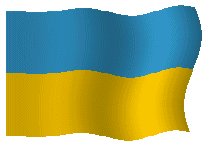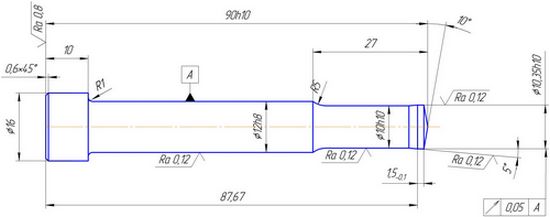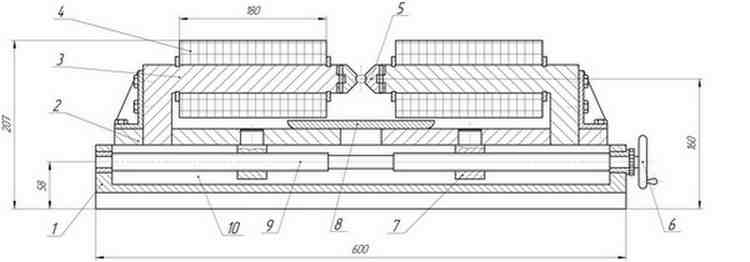

|
 |
UKRAINIAN |  |
RUSSIAN |
 |
Kondratenko AlexanderFaculty: Engineering Mechanics and EngineeringSpeciality: Metal-cutting machine-tools and systems |
|
1 INTRODUCTORY PART
1.1 Actuality of work
1.2 Purpose and tasks of work
1.3 Practical meaningfulness
1.4 Survey of research and developments
2 MAIN PART
2.1 Requirements for the accuracy and quality of the workpiece
2.2 General characteristic and assignment of magnetic-abrasive machining
2.3 The choice of magnetic-abrasive powder
2.4 Modernization of turning lathe 16K20 for the process of magnetic-abrasive machining
3 FINAL PART
Conclusion
Literature
At the present time, as finishing the surfaces of rotation with a curved generatrix is used mainly manual polishing. It does not meet the requirements of modern production, because characterized by low productivity, the big labour input, the dependence of productivity and quality of processing of the subjective qualities of the worker.
Mechanisation of processes of finishing of shaped surfaces of rotation demands continuous search of new technological decisions, which will expand possibilities of modern methods and will raise labour productivity.
Purpose of work is modernization turning lathe 16K20 for realisation of process of magnetic-abrasive machining (MAM) of details such as «Broaching puncheon» from hard alloy WC6 in the conditions of individual and small-scale production, and also a substantiation of use of a method of MAM of details such as «Broaching puncheon» in comparison with other kinds of finishing operations.
Main tasks of work are:
- analysis of various methods of finishing of details such as «Broaching puncheon»;
- research of process of MAM and a choice of ferromagnetic abrasive powder;
- checking calculation of power of electric motor of lathe 16K20;
- design of an inductor for MAM.
Unlike the device-prototype for МАМ, there is a possibility of processing of details of various diameters (in this case a diameter range: 8 - 22 mm). Also, modernized turning lathe can be recommended for implementation of the MAM of details such as bodies of rotation with straight generatrix and with a curved generatrix in the conditions of individual and small-scale production.
MAM method has been widely developed in various industries. The first publications about research and application of abrasive processing with magnetic field use have appeared in the sixties and owned by the Soviet scientist such as Baron Y. [1, 8], Shalnov V. and Verezub V. Also the MAM process research devoted to the works of Konovalov E., Minin L., Sakulevich F. [6], Fomich N., Skvorchevsky N. [4, 7], Yascheritsyn P. and etc.
There are now several models of machine tools for MAM of external surfaces of rotation. Developed universal device for MAM for the conditions of the individual and small-scale production [3], which are installed on the basic machine tools (milling, grinding, etc.).
Developed special semi-automatic or automatic high-performance machines, for serial and mass production [4].
Broaching puncheon is a body of rotation with a shaped surface and is used for hole piercing in the dies. Material of the die and broaching puncheon is hard alloy WC6.
The surface roughness of the holes should not exceed the value of Ra 0,63 micron.
Sketch details «Broaching puncheon» is shown in Figure 2.1.

As a finishing of broaching puncheon can be used the following methods: thin diamond grinding, polishing with diamond endless ribbons, superfinishing, polishing, lapping, MAM [5]. The analysis of features of ways of finishing has shown that the most perspective is the way of МАM.
The essence of MAM can be shown using the following scheme [2, 6, 9] (Figure 2.2).

Under this scheme, the workpiece is fixed in the centers or in a holder, and it dispose between the poles of an inductor (N and S). The gaps between the poles and the surface of workpiece are filling by magnetic-abrasive powder. Thus form abrasive tool, which copies the shape of workpiece. The rigidity of the instrument can be controlled by changing of intensity of the magnetic field in the gaps. The magnetic field keeps the powder in the gaps and presses it to the workpiece surface.
For polishing of broaching puncheon we will use this scheme processing.
The advantages of abrasive machining of details in a magnetic field are [7, 8]:
- mechanization of grinding and polishing of details with curved generatrix;
- use of cheap magnetic-abrasive powders;
- absence of necessity of wheel truing;
- independence of quality products on the qualifications of workers.
According to the recommendations of [1, 10, 11] for the MAM of broaching puncheon choose the magnetic-abrasive powder such as MAП-АСМ 28/20 Ni (Si 9,50% - 12,92%; Fe 78,10% - 85,74%; Ti 1 44% - 2,51%; Al 1,00% - 2,50%; Mn 0,25% - 0,51%; C 1,0% - 1,9%; S 0,012% - 0,047%; P 0 20% - 0,37%; Cr 0,28% - 0,40%; Ni 0,09% - 0,15%; Cu 0,045% - 0,060%; Ca 0,20% - 0,35%; Mg 0,1% - 0,12%).
Modernisation of turning lathe 16K20 consists in installation on it inductor. The scheme of the inductor is shown in Figure 2.3.

Inductor consists of case 1, carriages 2 with magnetic cores 3, the electromagnetic coils 4 and the pole pieces 5. Inside the case 1 is placed screw 9 with portions of the right and left hand threads and two magnetic core 10, along both sides of the screw. For installation working gaps carriages 2 with a screw 9 and nut 7 are moved synchronously to the workpiece axis or away from it. For readout of necessary movings of carriages 2 provide the limb 6. Tray 8 intend for collect the magnetic-abrasive powder.
Contents In the course of this work was carried out modernization of lathe 16K20 for the realisation process of MAM.
The main benefits of the upgraded machine tool are:
- machining of details such as bodies of rotation with straight generatrix and curved generatrix;
- machining of details of various diameters (in this case a range of diameters: 8-22 mm);
- machining of cylindrical details from metal materials, and from nonmetallic materials (ceramics, etc.);
- the economic feasibility of upgrading the machine, which is in the enterprise, as compared with the acquisition of new equipment.
Important note
During the process of writing, the master’s work hasn’t completed yet. Final completion: December, 20010. The full text of work and materials on the theme could be received from the author or him scientific adviser after the indicated date.
|
|